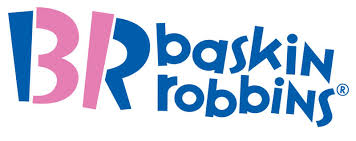
Industrial Strategies and Government Policies
Order Instructions:
This is a group report, which are consisted of 4 people. The rest of people in the group are doing their own work, and I need to work on ***TASK NUMBER 5.***
Tasks we have divided are:
1- Executive Summary
2- Brief outline of New Trade Theory
3- Brief outline of Porters Theory of national Competitive advantage
4- Outline the current position and issues of the Australian industry you have chosen
5- (THIS ONE) Outline and justify what industry strategies and government policies you would recommend be adopted to improve Australia’s position in the industry for the short and long term. (THIS ONE)
6- Conclusion
SAMPLE ANSWER
Industrial Strategies and Government Policies
Over the last decades, the airline industry of Australia has been faced with stiff competition that has seen other players such as Singapore airline making remarkable profits at the behest of the former. Homsombat and Fu (2014) note that unless something serious is done, the industry will still continue to register losses as the Asian airlines make huge profits and continue dominating the market. As such, it is upon the government and the management to employ strategies and policies that will ensure the airline industry survives in the international airline market. This section of the paper presents policies and strategies that will see the company rejuvenates to its dominance in the airline industry.
Industrial Strategies
Lowering prices and offering affordable tariffs
One of the strategies to attract customers is by lowering prices in a manner that does not affect the business. Although quanta’s authorities say that the increase of travel charges is specifically based on the increase of fuel cost, consumers are weary since other airlines charge relatively low prices yet have the same fuel costs. Homsombat and Fu (2014) say that the high charges have swayed local consumers to preferring the Asian airlines over domestic airlines. An example of the continuous increase of fare price is evidenced in March 2014. One way flight on Qantas Jumbo from Australia to London has a $380 fuel charge, while it costs $340 on an A380 to the United States (Cavusgil et. al., 2014). Therefore, are the imposts really fair? Fuel prices have been at generally high, balancing between $US120 and $US140 a barrel (Cavusgil et. al., 2014). Passengers have been benefiting from the stiff competition from state-sponsored Chinese and Middle Eastern airlines, which keep on driving down fares on strategic routes to Australia. It suggests that airlines, including Qantas and other Australian airlines, are losing big money and dominance on long-haul routes. Lowering of rates has been the strategy of the current commanders of the airline industry. For example, in the last decade, Middle East giants such as Qatar, Emirates, and Etihad lowered their prices, and at the same time had superb networks (Homsombat and Fu,2014). New airlines such as airAsiaX and china southern airline will dominate the industry due to their strategy of low rates
. Therefore, one of the best strategies for the Australian industry is to lower their tariffs and the company will attract international and domestic customers that will not only bring profits but also assist the company to strive through the stiff competition.
Initiation of innovation
Australian airline has to fight to be among the first to initiate innovation. As air travel is often associated with high risk and faces skepticism from consumers, Aviation organizations combat this negative stereotype with increased comfort ability. Therefore, efforts to initiate innovation towards comfort and infrastructure are ways to assure customers that their wellbeing is the concern of the company (Airlines Industry Profile, 2014). Australian customers have been leaving the airline for years. Primarily, it was because of cabin offerings. Malaysia, Cathay pacific and Singapore airline are the veterans of free drinks that were started in 1960s.
Qantas and other airlines reluctantly followed. Czinkota (2010) articulates that originality is something that makes customers believes in you. This can be seen through; “that nobody would believe any Mercedes Benz manufactured in Africa since the originality of Benz is somewhere far from Africa” (Czinkota 2010). In 1990s, the airlines of Singapore led the industry with seatback videos and games for economy passengers. Virgin Atlantic and emirates also adopted the entertainment system that pleased many customers. Inextricably, Qantas, an Australian airline was still stoic in its resistance. Gao and Shi (2011) suggest that Australian airlines had no reason for charging such high prices without these new aviation features. At that time, airlines that were the first movers in innovation took over from the Australian airlines. As such, other companies like Qantas of Australia should employ innovation as the only strategy that attracts customers to the services and mold popularity in the country instead of copying others.
The Australian airline should recognize that to sustain the differentiation, the company must maintain a continuous development, and be in a position to dispose programs or services that do not provide competitive differentiation any more.
Merger and alliance strategy
The Australia airline should use the merger and alliance strategy to dominate the market. As defined by Peng (2013), merger strategy is the system by which two or more companies come together or merge to form one company with strong objective and diversified ideas from different individuals. One of the major factors in the Australian industry is that the domestic competition between local airlines such as Qantas and other airlines does not prompt growth. Therefore, it may be advantageous for aviation companies to merge in order to deplete competitive pricing and allow for greater growth and development. One major benefit of merger is the creation of a large customer base and the rebranding opportunity of the organization. Although mergers were discouraged during regulated era, they have been very effective during the deregulated period (Prince & Simon, 2009). Those alliances have not materialized so much, but they might be resurrected in future to assist the firms that are heading towards bankruptcy (Cavusgil et. al., 2012). Additionally, major carriers may suggest mergers, and some new entrants into the market might be absorbed in a future wave of airline industry consolidations. As much as this method had been started in Australia, its full implementation has not been given a serious focus (Cavusgil et. al., 2014). For instance, Virgin airline charges an average of $310 to US but not charges the levy to Europe since the company is in a strategic alliance with Etihad airline. Therefore, to become relevant in the competitive airline industry, Australia airlines should form a merged cooperation to consolidate resources, technology, and customers to compete with rivals such as Qatar Emirates.
Staff trainings
Australian aviation organizations such as Quanta’s, need extensive staff training. Building positive relationships with customers will ensure satisfied and repeat flyers. Training must run to all employees within the organisation, and the training must align with the business strategy and direction. Nand Singh and Power (2013) explains that it is one of the major factors that brought Singapore airline to where it is. Senior managers and all staff members require functional skills in addition to the skills they possess in their area of professional work. For Singapore, they believed training is next to godliness (Peng, 2013). By training the staff on regular changes (including the CEO), will ensure factors such as improper fare payments are dealt with in accordance to how the rivals charge their customers. It is for that reason that training managers and employees on a regular occasion is required in the industry.
Government policies
Government policies
for the government of Australia, open skies agreement with other competitive nations will give room for price reduction. Australia has signed polices such as these with countries such as the United States of America. Although the Australian government trade with numerous countries that have not yet joined open skies policies, The Open Skies policy eliminates interferences of flights between two countries which paves the way for additional competitors (Peng, 2013). For Australia the signed agreement between itself and the US has enabled Australian airlines such as Qantas to increase its flight services with up to forty-eight flights landing weekly in the mainland of US. These creating many add on affects for Australia with Increased profits and awareness, as well as its competitor stance against US airlines (Cavusgil et. al., 2014). With such outcomes, important agreement and policies between countries like Singapore and other airline oriented countries proves that growth and development of Australian airline industry is still productive. Potential growth in clientele, price reductions and profit increases as well as greater market share are all potential outcomes that policies such as these allow for nations and their growing industries. Therefore if polices such as the Open Skies policy was to be iniated and signed by largely dominated airline nations then potential growth due to improved market availability, greater profits and lower costs will enable increasing competition and nations ability to grow.
By creating awareness of agreement policies, especially with companies in Asia where fare is quite high, deregulated conflicting business will be implemented after lowering the national security enabling travelling to be easy for travellers. Ideally if the Australian government were to sign a policy that regulates taxes and fees than they would be equally aligned with competitor countries allowing for the increase in their expansion and development of airlines.
As much as the Australian government has taken on US airline processes and procedures which has increased the amount per trip Captor, Australian airlines have still been subject to poor growth as fees and taxes remain a heavy burden upon the Australian airline industry (Cavusgil et. al., 2012). For the Australian government to reduce these burdens a review of taxes and fees would be a must and in this case the lowering of tariffs and taxes imposed on the Australians airlines would be a necessity. Nand ,Singh and Power (2013) argue that the fees have been a source of dominance of other airlines in countries. While possessing the ability to offer cheaper ticket with a deregulated market facilitates the loyalty of the customer, expensive air ticket is one of the factor that destroy the engagement of the customer. Therefore, for customers choosing between Singapore and Australian airlines little consideration for choice is needed.
A rate of return policy is in some cases used as a restriction to direct judgments by lowering of the prices per each trip made.That is the policy authority enabling a fair rate of return on the worth of the assets needed to produce those services. It gives incentives for the company to upsurge its “rate base” by capitalizing more on capital input that is relative to labor input; alternatively, the firm under rate-of-return limitation has comparatively more money than is required to manufacture any given output. This is an imperative source of inefficiency caused by the regulation.
Over-capitalization,is the tendency of companies to engross in excessive amounts of capital accretion to expand the volume of their profits. If companies’ profits to capital ratio are controlled at a certain level then there will be strong incentives for firms to invest in order to increase profits overall.
Therefor this alludes to the idea that the government should employ more policies that govern the Australian airspace to eliminate the unnecessarily traffics. Air services guided by the policy should review the aeronautical pricing for terminal navigation products in the first quarter as composed by Czinkota (2010) with a view to forming a framework that propagates the augmentation of air traffic services in Australia including major regional airports. The Government should then task the Aviation Policy Group agencies to launch clear criteria selections that are aligned with the complexity and nature of operations at people’s locations that will assist to determine when new, modified or a substitute air traffic services and facilities are needed. The policy will ensure that there is no air space traffic that can inconvenience the domestic flights and other international flights from other countries.
References
Airlines Industry Profile: Australia. (2014). Airlines Industry Profile: Australia, 1-33.
Cavusgil, S.T., Knight, G., Riesenberger, J.R., (2014) International Business: The New Realities 3e, Upper saddle River, N.J. : Pearson Prentice Hall.
Cavusgil, S.T., Knight, G., Riesenberger, J.R., Rammal, H.G., Freeman, S., (2012) International Business: The New Realities Australasian Edition, Pearson Australia.
Czinkota, M.R., Ronkainen, I.A., Moffett, M.H., (2010) International business, 8th ed, Mason, Ohio: Thomson South-Western.
De Roos, N, Mills, G, & Whelan, S 2010, ‘Pricing Dynamics in the Australian Airline Market’, Economic Record, 86, 275, pp. 545-562
Gao, T, & Shi, L 2011, ‘How Do Multinational Suppliers Formulate Mechanisms of Global Account Coordination? An Integrative Framework and Empirical Study’, Journal Of International Marketing, 19, 4, pp. 61-87
Homsombat, W, Lei, Z, & Fu, X 2014, ‘Competitive effects of the airlines-within-airlines strategy – Pricing and route entry patterns’,Transportation Research Part E, 63, pp. 1-16,
Nand, A, Singh, P, & Power, D 2013, ‘Testing an integrated model of operations capabilitiesAn empirical study of Australian airlines’,International Journal Of Operations & Production Management, 33, 7, pp. 887-911,
Peng, M., (2013) Global, Mason, Ohio, Southwestern Cengage Learning, (ON RESERVE)
Prince, J, & Simon, D 2009, ‘Multimarket contact and service quality: evidence from on-time performance in the U.S. airline industry‘, Academy Of Management Journal, 52, 2, pp. 336-354
We can write this or a similar paper for you! Simply fill the order form!







